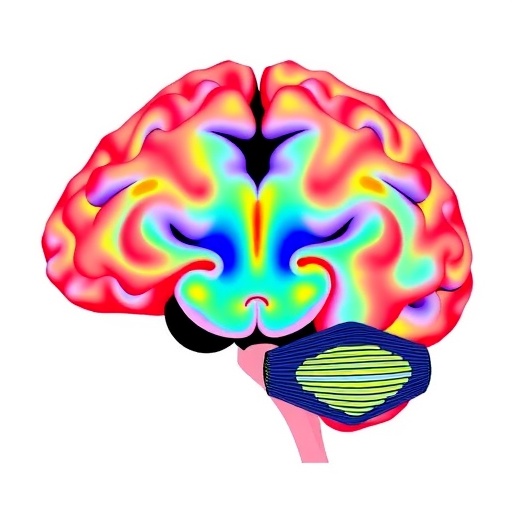In a groundbreaking multi-institutional study led by the team at Mass General Brigham Cancer Institute, researchers have uncovered a transformative approach to understanding and monitoring treatment response in recurrent glioblastoma (GBM), the most aggressive form of brain cancer. Published in the prestigious journal Science Translational Medicine, this study leverages serial tumor biopsies combined with comprehensive multi-omics analyses to reveal immune activation and tumor microenvironment changes that evade detection by conventional imaging techniques.
Glioblastoma multiforme remains one of the deadliest malignancies, characterized by rapid growth, invasive spread within the brain, and near-universal recurrence despite aggressive treatment modalities. Standard clinical monitoring relies heavily on magnetic resonance imaging (MRI) to assess tumor progression or response after therapeutic intervention. However, this imaging modality often falls short in differentiating between true tumor growth and treatment-induced phenomena, such as inflammation and immune infiltration, which can mimic progression—a challenge known as pseudoprogression.
Dr. E. Antonio Chiocca, the executive director of the Center for Tumors of the Nervous System at Mass General Brigham Cancer Institute and the study’s senior investigator, highlights the intrinsic difficulty in managing GBM patients. “Obtaining tissue from brain tumors is fraught with risk and technical complexity,” he notes, emphasizing that “the dynamic and heterogeneous nature of these tumors demands more nuanced methods to truly understand therapeutic impact.” His team’s bold endeavor challenges established paradigms by serially sampling tumors during treatment instead of a sole pre-treatment biopsy, offering unprecedented insights into the ongoing molecular and cellular changes within the tumor microenvironment.
This collaborative effort, encompassing over one hundred experts from multiple premier institutions and funded by Break Through Cancer, specifically investigated two recurrent GBM patients enrolled in a clinical trial for CAN-3110, an engineered oncolytic virus designed to selectively infect and lyse tumor cells while potentiating anti-tumor immunity. Over a four-month treatment period, researchers procured 96 tumor samples, enabling a longitudinal molecular portrait of therapeutic action.
The investigative team applied state-of-the-art multi-omic integration techniques harnessing genomic, proteomic, metabolomic, immunophenotypic, and digital pathology data, facilitated by Break Through Cancer’s Data Science Hub (DASH). This holistic approach unveiled complex evolving interactions within the tumor ecosystem that were undetectable through routine MRI scans. Notably, while imaging suggested disease progression, molecular analyses revealed immune system activation and microenvironmental remodeling consistent with anti-tumor response.
The phenomenon of pseudoprogression, often a confounding factor in neuro-oncology, stems from immune-mediated inflammation causing transient increases in lesion size and contrast enhancement on imaging. The study’s findings rigorously demonstrate how CAN-3110 induces such immune activation, creating a state where traditional radiographic assessments may inaccurately infer tumor growth. This critical insight paves the way for redefining clinical endpoints and monitoring strategies in GBM immunotherapy trials.
While initial results showed one of the two patients exhibited marked molecular signatures indicative of therapeutic effectiveness, with the tumor microenvironment being reshaped to favor immune infiltration and cytotoxic activity, the other patient’s disease remained stable without evident progression. This heterogeneity underscores the necessity for real-time assessment tools to personalize and optimize treatment regimens.
Dr. Chiocca and his colleagues advocate for a new clinical trial paradigm integrating longitudinal tumor sampling to capture dynamic tumor-immune interactions, enabling a more accurate interpretation of therapeutic outcomes. This innovative framework promises to accelerate the development of more effective immunotherapies for brain cancer, addressing the urgent need for improved patient prognoses.
The collaborative scope of the study is vast, involving an array of specialists from neurosurgery, oncology, immunology, pathology, computational biology, and bioinformatics. Their interdisciplinary expertise allowed for comprehensive data generation and interpretation, reflecting the complexity of glioblastoma biology and the multifaceted impact of oncolytic virotherapy.
Looking ahead, the research team plans to expand this clinical trial platform to include additional immunotherapeutic candidates, including two distinct vaccine strategies currently under investigation. By accruing further patient data, they aim to validate and refine biomarkers of response, ultimately transforming how glioblastoma is treated and monitored.
This study not only showcases the power of multi-omic approaches in revealing mechanisms masked by conventional clinical methods but also embodies the spirit of collaboration essential to conquering one of medicine’s greatest challenges. The integration of serial biopsies with advanced data analytics sets new standards for precision oncology in brain cancer and holds promise for translating these findings into tangible clinical benefits.
In conclusion, the innovative methodology and findings published by Mass General Brigham investigators mark a pivotal stride in neuro-oncology. By exposing hidden anti-glioblastoma responses and highlighting the limitations of current imaging-dependent assessment, this research heralds a future where real-time molecular monitoring could individualize treatment, improve clinical outcomes, and ultimately extend survival for patients facing this formidable disease.
Subject of Research: People
Article Title: Serial Multi-omics Uncovers Anti-Glioblastoma Responses Not Evident by Routine Clinical Analyses
News Publication Date: 8-Oct-2025
Web References:
https://breakthroughcancer.org/
https://www.massgeneralbrigham.org/en/patient-care/services-and-specialties/cancer
http://dx.doi.org/10.1126/scitranslmed.adv2881
References:
The full study is available in Science Translational Medicine, DOI: 10.1126/scitranslmed.adv2881.
Keywords:
Glioblastomas, Brain cancer, Cancer cells, Glioblastoma cells, Cancer immunotherapy, Immunotherapy, Immunology




